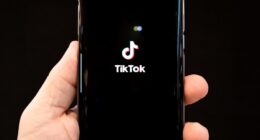Sonic branding, often referred to as audio branding, is the strategic use of sound to reinforce a brand’s identity and enhance its recognition in the marketplace. This concept transcends mere jingles or catchy tunes; it encompasses a wide array of auditory elements, including sound logos, brand anthems, and even specific sound effects that evoke particular emotions or associations. In an increasingly crowded marketplace, where visual stimuli often dominate consumer attention, the auditory dimension of branding offers a unique avenue for differentiation.
As brands seek to create memorable experiences, sonic branding emerges as a powerful tool that can resonate with consumers on a deeper emotional level. The roots of sonic branding can be traced back to the early 20th century when companies began to recognize the potential of sound in advertising. However, it wasn’t until the advent of digital technology and the proliferation of multimedia platforms that sonic branding truly began to flourish.
Today, brands leverage sound across various touchpoints, from television commercials and radio spots to mobile apps and social media. The rise of smart speakers and voice-activated devices has further amplified the importance of sound in brand communication, making it essential for companies to develop a cohesive auditory identity that aligns with their overall brand strategy.
Key Takeaways
- Sonic branding is the use of sound and music to create a unique brand identity and enhance brand recognition.
- Sonic branding is important in marketing as it helps to create a memorable and emotional connection with consumers.
- Successful sonic branding campaigns include Intel’s “Intel Inside” sound logo and McDonald’s “I’m Lovin’ It” jingle.
- McDonald’s “I’m Lovin’ It” jingle is a prime example of successful sonic branding, creating a catchy and memorable tune that is instantly associated with the brand.
- Intel’s iconic “Intel Inside” sound logo is a successful example of sonic branding, creating a distinctive sound that is instantly recognizable and associated with the brand.
The Importance of Sonic Branding in Marketing
Sonic branding plays a crucial role in marketing by enhancing brand recall and recognition. Research indicates that auditory stimuli can evoke memories and emotions more effectively than visual cues alone. This phenomenon is particularly relevant in an era where consumers are bombarded with information from multiple channels.
A well-crafted sonic identity can cut through the noise, creating a lasting impression that lingers in the minds of consumers long after they have encountered a brand. For instance, a distinctive sound logo can trigger instant recognition, allowing consumers to associate specific auditory cues with particular brands. Moreover, sonic branding fosters emotional connections between consumers and brands.
Sound has the unique ability to evoke feelings and moods, making it an effective tool for storytelling. Brands that successfully integrate sound into their marketing strategies can create immersive experiences that resonate with their target audience. For example, a soothing melody might be used to convey tranquility and relaxation, while an upbeat jingle could evoke feelings of joy and excitement.
By aligning their sonic elements with their brand values and messaging, companies can cultivate a more profound relationship with consumers, ultimately driving loyalty and engagement.
Examples of Successful Sonic Branding Campaigns

Numerous brands have successfully harnessed the power of sonic branding to create memorable campaigns that resonate with their audiences. One notable example is Coca-Cola’s “Taste the Feeling” campaign, which features a catchy melody that encapsulates the essence of the brand. The jingle is designed to evoke feelings of happiness and togetherness, aligning perfectly with Coca-Cola’s long-standing association with joy and celebration.
This campaign demonstrates how a well-executed sonic branding strategy can enhance brand messaging and create a cohesive narrative across various marketing channels. Another compelling case is that of Nike, which has effectively utilized sound in its advertising campaigns to inspire and motivate consumers. The brand’s use of powerful music tracks in commercials not only amplifies the emotional impact of its messaging but also reinforces its identity as a leader in athletic performance.
By carefully selecting music that resonates with its target audience, Nike has created a sonic signature that enhances its brand image and fosters a sense of community among its consumers.
McDonald’s “I’m Lovin’ It” Jingle
| Metrics | Data |
|---|---|
| Year Released | 2003 |
| Composer | Justin Timberlake |
| Duration | 3 seconds |
| Impact | Became McDonald’s longest-running marketing campaign |
| Recognition | One of the most recognizable jingles in advertising history |
One of the most recognizable examples of sonic branding is McDonald’s “I’m Lovin’ It” jingle. Launched in 2003, this catchy tune has become synonymous with the fast-food giant, serving as a cornerstone of its global marketing strategy. The jingle’s simple melody and repetitive lyrics make it easy for consumers to remember, ensuring that it sticks in their minds long after they hear it.
This auditory cue not only reinforces McDonald’s brand identity but also evokes feelings of happiness and satisfaction associated with enjoying a meal at the restaurant. The success of the “I’m Lovin’ It” jingle can be attributed to its versatility; it has been adapted for various marketing campaigns across different cultures and languages while maintaining its core message. This adaptability has allowed McDonald’s to create a consistent sonic identity that resonates with diverse audiences worldwide.
Furthermore, the jingle’s integration into television commercials, radio spots, and even digital platforms has solidified its place in popular culture, making it an enduring symbol of the McDonald’s brand.
Intel’s Iconic “Intel Inside” Sound Logo
Intel’s “Intel Inside” sound logo is another prime example of effective sonic branding. Introduced in 1994, this brief audio signature has become one of the most recognizable sound logos in the technology industry. The simple yet distinctive four-note melody encapsulates Intel’s commitment to innovation and quality, serving as an auditory cue that signals reliability to consumers.
The sound logo is strategically placed at the end of commercials and product presentations, reinforcing brand recognition every time it is heard. The impact of Intel’s sound logo extends beyond mere recognition; it has become an integral part of the company’s overall branding strategy. By consistently using this audio signature across various platforms, Intel has created a cohesive auditory identity that resonates with both consumers and industry professionals alike.
The sound logo not only differentiates Intel from its competitors but also reinforces its position as a leader in technology innovation.
Mastercard’s Sonic Branding Strategy

Mastercard has embraced sonic branding as a key component of its marketing strategy, recognizing the power of sound to enhance brand recognition and emotional connection. The company’s sonic identity includes a distinctive audio logo that features a simple yet memorable melody played on piano and strings. This audio signature is designed to evoke feelings of trust and security, aligning perfectly with Mastercard’s core values as a financial services provider.
In addition to its audio logo, Mastercard has developed a comprehensive sonic branding strategy that extends across various touchpoints, including advertisements, social media campaigns, and even customer service interactions. By integrating sound into these experiences, Mastercard creates a cohesive auditory environment that reinforces its brand identity. The company’s commitment to sonic branding reflects a broader trend among businesses seeking to leverage audio elements to enhance customer engagement and loyalty.
The Role of Sonic Branding in Building Brand Identity
Sonic branding plays a pivotal role in shaping brand identity by creating an auditory representation of a company’s values and personality. Just as visual elements like logos and color schemes contribute to brand recognition, sound can evoke specific emotions and associations that align with a brand’s messaging. A well-defined sonic identity helps establish a consistent tone across all marketing channels, ensuring that consumers have a unified experience when interacting with the brand.
Furthermore, sonic branding allows companies to differentiate themselves in competitive markets. In industries where products may be similar or indistinguishable from one another, sound can serve as a unique identifier that sets a brand apart. For instance, luxury brands often use sophisticated melodies or orchestral arrangements to convey elegance and exclusivity, while tech companies may opt for modern electronic sounds to reflect innovation and forward-thinking.
By carefully curating their sonic elements, brands can create distinct identities that resonate with their target audiences.
The Future of Sonic Branding in Marketing
As technology continues to evolve, the future of sonic branding appears promising and dynamic. With the rise of voice-activated devices and smart speakers, brands are presented with new opportunities to engage consumers through sound. Voice search optimization is becoming increasingly important as more people rely on voice commands for information and shopping.
This shift necessitates that brands develop not only visual identities but also auditory personas that can be recognized through voice interactions. Moreover, advancements in artificial intelligence are enabling brands to create personalized audio experiences tailored to individual preferences. By analyzing consumer behavior and preferences, companies can craft unique sonic experiences that resonate on a personal level.
This level of customization could revolutionize how brands connect with their audiences, making sonic branding an even more integral part of marketing strategies moving forward. In conclusion, sonic branding represents an evolving frontier in marketing that leverages the power of sound to create memorable experiences and foster emotional connections between brands and consumers. As businesses continue to explore innovative ways to engage their audiences through auditory elements, the significance of sonic branding will only grow in importance within the broader landscape of marketing strategies.
If you’re interested in exploring the fascinating world of sonic branding and how it can elevate a brand’s identity, you might find the article on Music Marketing Digital particularly enlightening. This piece delves into various successful examples of sonic branding, illustrating how distinctive sounds and musical cues can create memorable brand experiences and foster emotional connections with consumers. Whether you’re a marketer, a brand manager, or simply curious about the impact of sound in advertising, this article provides valuable insights and inspiration.
FAQs
What is sonic branding?
Sonic branding is the use of sound and music to create a unique identity for a brand. It involves creating a distinct audio signature that represents the brand and can be used across various platforms and touchpoints.
What are some examples of sonic branding?
Some examples of sonic branding include the iconic Intel “bong” sound, the McDonald’s “I’m lovin’ it” jingle, and the NBC chimes. These audio signatures are instantly recognizable and associated with their respective brands.
How is sonic branding used in marketing?
Sonic branding is used in marketing to create a memorable and consistent brand identity. It can be incorporated into advertising, product packaging, phone systems, and other brand touchpoints to reinforce brand recognition and evoke specific emotions or associations.
Why is sonic branding important?
Sonic branding is important because it helps brands stand out in a crowded marketplace, creates a memorable and emotional connection with consumers, and reinforces brand identity across different channels and platforms.
How can businesses create their own sonic branding?
Businesses can create their own sonic branding by working with sound designers, composers, and marketing professionals to develop a unique audio signature that reflects their brand values and resonates with their target audience. This may involve creating a custom jingle, sound logo, or sonic mnemonic.









